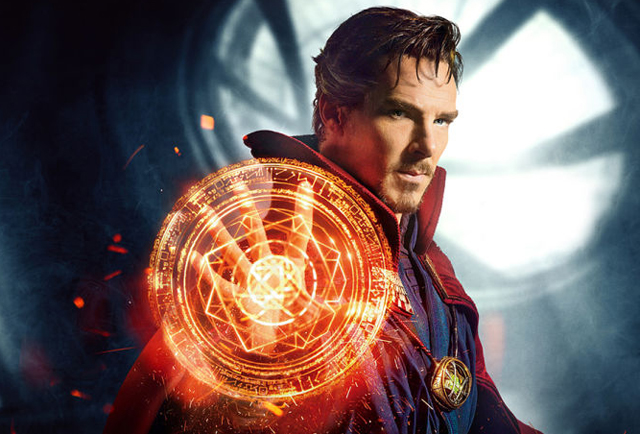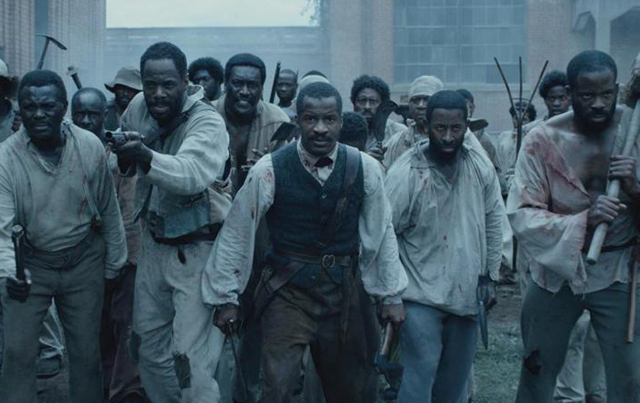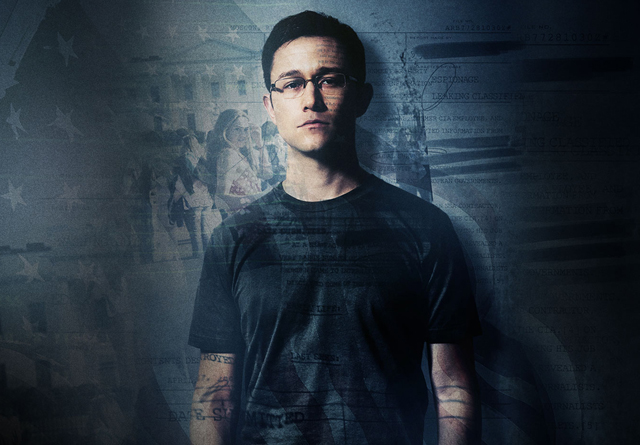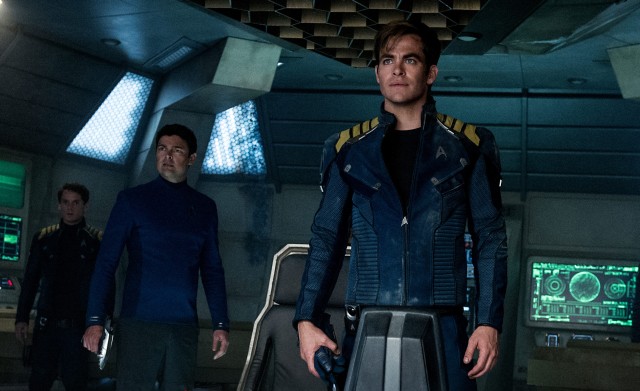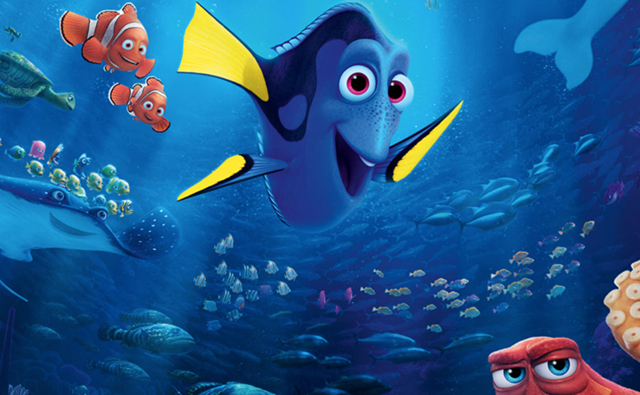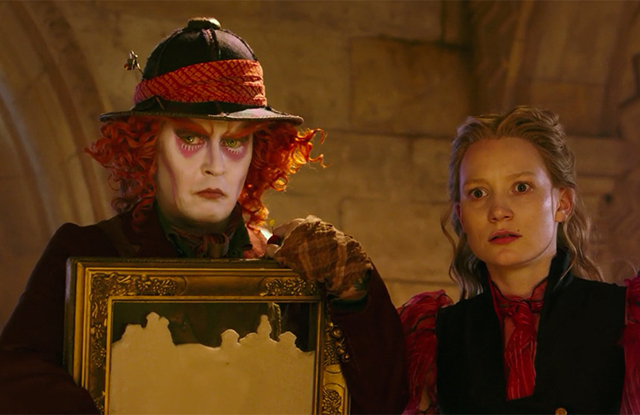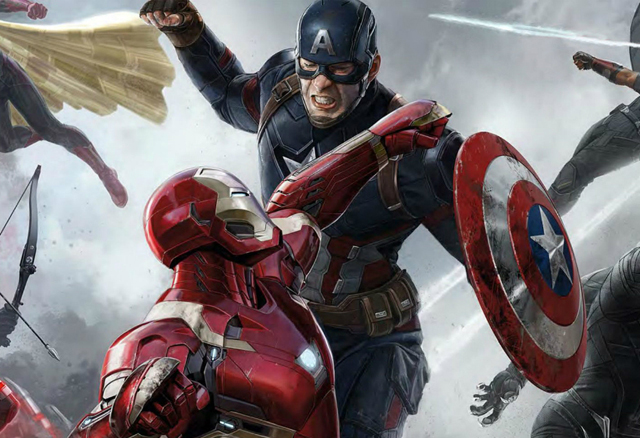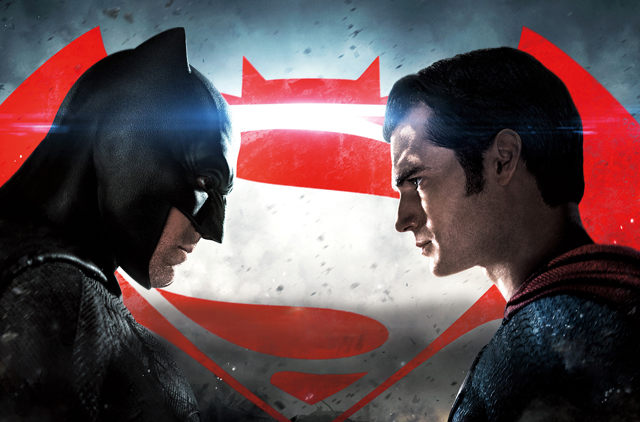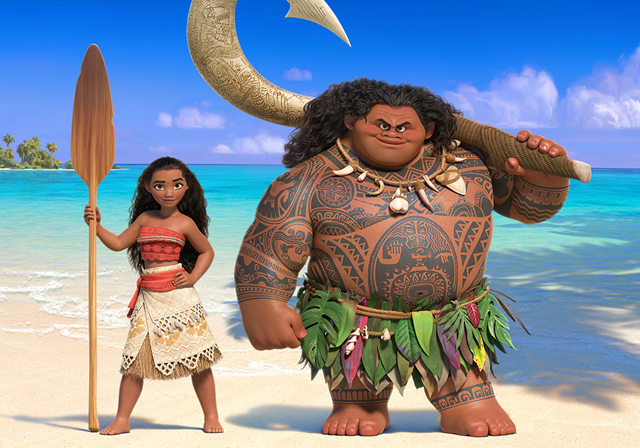
Disney’s success in the film medium has come from a lot of factors, but one of the chief ones is their ability to fully reinvent themselves, even while still having a foothold in the past. When you look over the whole of their film library, primarily among their animated canon, you see a lot of highs and lows in their history, with the high points standing out as the defining elements of their studio character. While varied degrees of success have come their way, their primary expertise has always been fairy tales and legends. It would make sense, since that’s how the Disney company started out in features, with the release of Snow White and the Seven Dwarves in 1937. Since then, any era of advancement in the Disney company usually is marked by the release of another fairy tale classic, like Cinderella (1950) and Sleeping Beauty (1959) in the Golden Era of the 50’s, or The Little Mermaid (1989) and Beauty and the Beast (1991) in the Disney Renaissance, or even in the Digital Era with Frozen (2013). Each of these successful fairy tale features also built up a lucrative brand for the company dedicated to the Disney Princesses. The Princess line has allowed itself to be flexible, so that it could include characters outside of fairy tales to fall under the same branding, especially if they are representative of other cultures. That’s why you see Pocahontas included as a Disney Princess as well as Mulan, despite the fact that neither are royalty in their selective films. Even Pixar’s Merida from Brave (2012) gets lumped in. Whatever the reasoning behind each one’s inclusion, Disney’s Princess brand is a powerful one and they are eager to keep it growing, and with the release of their new film Moana, they have added a rather unique newcomer to their club.
Moana tells an original story derived from various legends told in various Pacific Island cultures. It’s not the first time the company has chosen a setting like this for a movie, or used Oceanic people for their main characters. However, that earlier film was Lilo & Stitch (2002), a contemporary story about native Hawaiians encountering a rambunctious alien creature. It was a movie respectful of Pacific Island culture and people, but it only looked briefly into the cultural heritage of it’s characters and instead firmly put them in a modern, homogenized setting. Moana, on the other hand, puts the culture and legends of it’s setting front and center. And one thing that is reassuring about Disney’s track record with depicting other world cultures is that they do their research thoroughly in order to capture some authenticity with their depiction. Sure, Disney does soften cultural traits in order to suit their corporate image (a process dubbed Disney-fication), but they do make their best effort to try to give each cultural group or race a fair place in their overall community. Moana allows for the many cultures of the Pacific Islands to have their story presented to the world in the spirited Disney way, and the project comes from some top tier talent at the company. The directors are long time veterans John Musker and Ron Clements, a successful duo at Disney for over 30 years whose credits include hits like The Little Mermaid, Aladdin (1992), Treasure Planet (2002) and The Princess and the Frog (2009). Moana marks their first CGI feature, as well as their first in the Cinemascope format. In addition to their legendary directors, Disney also tapped songwriter Lin-Manuel Miranda to pen several new songs for the film, coming off recently from his mega hit Broadway show, Hamilton. With strong names like these attached, you would expect that there are high hopes surrounding Moana. But, is it another Disney classic, or not?
Moana sets itself on no specific island found in the Pacific Ocean, but instead portrays a portrait of traditional Islander life in a more classical age. We meet Moana (voiced by Auli’l Cravalho) who is being prepped by her father, Chief Tui (voiced by Temuera Morrison), to be the next chieftain of their island village. At the same time, Moana’s free-spirited grandmother Tala (voiced by Rachel House) indulges the girl’s desires to see what is beyond her island and gives her the knowledge of the histories and legends of her people. Moana learns from her granny that many years ago, the Goddess of creation named Te Fiti had her heart stolen by a Demi God named Maui (voiced by Dwayne “The Rock” Johnson). Upon escaping the island home of Te Fiti, Maui encountered a demon formed out of lava named Te Ka, who fiercly attacks him and causes Maui to drop both the Heart of Te Fiti and his magical fish hook, the source of all his power. Without her heart, Te Fiti drains the life out of Islands throughout the ocean, and the web of decay has now reached Moana’s Island, causing the crops to die. Despite her father’s stern warnings, Moana sets off alone to find Maui and force him return the heart stone to it’s rightful place. By her side is the rooster Hei Hei (voiced by Alan Tudyk), and the ocean itself, which has a mind of it’s own, helping Moana along the way after it has chosen her specifically for the task. Once Maui is found, the two set off on the journey which includes encounters with the Kakamora (coconut bodied pirates) and a gluttonous giant crab named Tamatoa (voiced by Flight of the Conchord’s Jemaine Clement). Though she has the ocean as her ally, Moana still has to learn to navigate across the vastness of it, and it’s a quest that will test every ounce of her being, as well as show her exactly the person she needs to be.
Moana is a very pleasurable adventure from Disney, and feels right at home with all of their other animated features. It is beautiful to behold, and is entertaining from beginning to end. The only thing that I would say that keeps it from achieving all time classic status as a Disney feature is the fact that the movie more or less is a tad too familiar. It’s not poorly told, nor does it do anything out of line that sours a good narrative; it’s just that I feel that it could have been just a little better if it took some more unexpected routes in the story. I think this movie has the disadvantage of following in the wake of Zootopia, Disney’s early Spring release, which was a much more risk-taking film, making it one of the studio’s best efforts in years. Moana by comparison just plays to more of what you would expect from Disney, and while that’s acceptable, it’s not really revolutionary either. And, it seems to me that the filmmakers knew that going in too. There are several jabs at Disney Princess cliches thrown at us within the movie, and they can be quite refreshing. A particularly funny one comes from Maui halfway through where he points out how Princesses always carry around an animal sidekick with them. But, even though the movie pokes fun at the cliches, it only reinforces your awareness that they are there, and the movie isn’t daring enough to try to avoid them. But, even still, this movie is a thoroughly enjoyable experience. I would even say among the Princess focused films, it’s the best we’ve seen from Disney since the Renaissance; yes even better than Frozen (which was just okay to me). Cliched or no, you are not going to come away from this movie feeling like it’s a waste of your time.
Perhaps the film’s greatest strength is it’s characters. In particular, Moana herself. She is one of the best written and performed heroines to be found in the whole Disney canon, and it’s her journey that makes the whole film worthwhile. While the journey itself can sometimes be cliched, the growth of Moana’s character is not. I love the fact that the story foregoes the necessity of making her gender a factor in this story. Moana is not trying to prove her worth as a girl in society nor is she trying to prove herself as a leader. Those things are already established for her at the start. She’s already taking her place as the ruler of her people before her journey begins. Her growth as a character is more of a personal one of enlightenment, allowing her to discover the person she really is and help her lose all self doubt that could prevent her from becoming a better leader. This personal journey is what makes Moana far more interesting than the usual Disney Princess, who tend to not have internal conflicts define their characters. Auli’l Cravalho does a fantastic job of voicing the character, capturing the spunkiness of youth, but also the depth of a girl burdened by the responsibility that she holds for her people as well as for herself. Like most other culturally based films in the Disney canon, I applaud them for filling the voice roles with actors representative of those cultures, and Moana is no different. Multiple Pacific Island ethnicities are represented in the cast, including Cravalho who is Polynesian, Dwayne Johnson who is half-Samoan, and both Temuera Morrison and Jemaine Clement who have New Zealander Maori ancestry. It all brings a nice authenticity to the voices of these characters. And the cast is universally strong throughout the movie. Dwayne Johnson’s on-screen charisma translates surprisingly well into the character of Maui too. And I especially loved the tender quirkiness of Rachel House as Moana’s grandmother. Overall, each helps to make this another great addition of characters to the ever growing Disney family.
One thing that I’m sure a lot of people are going to take away from this film more than anything is the music. Disney of course has left a huge mark on the classic Hollywood musical tradition, and Moana hopes to add it’s own contribution to the great Disney Songbook. In order to capture the sounds of the Pacific Islander cultures, it seems unusual that they would select a Puerto Rican-American for the job, but it’s understandable when that person is the award-winning Lin-Manuel Miranda. After completing one of the biggest Broadway blockbusters in recent memory with Hamilton, the timing couldn’t be much better for Disney to have new songs written for their film by this superstar. And the songs he has co-written with Samoan musician Opetaia Foa’i have that nice mix of contemporary pop and authentic Oceanic cultural influence. Thankfully, none of the songs here are going to be omnipresent earworms like Frozen’s “Let it Go,” but a few still stand out as catchy and memorable. I think the real standout is “We Know the Way,” an epic centerpiece song about the history of the Oceanic wayfinders who founded so many of the cultures on the Islands of the Pacific, including Moana’s own. It’s a song that evokes the same grandeur of a melody like The Lion King’s “Circle of Life,” and more than any other becomes the theme of the movie itself. I also have a soft spot for the song “Shiny,” which is sung by Jemaine Clement’s Tamatoa. It would have been a waste to not take advantage of combining the voice of the Flight of the Conchords with the writer of Hamilton, and thankfully Disney did not miss this opportunity. It’s a great, gaudy tune that sounds like something Tim Curry would’ve performed in his Rocky Horror heyday, and it’s probably my favorite Disney Villain song in quite a long time. Surprisingly enough, they managed to get Dwayne Johnson to sing in the movie, and while he’s a bit out of his league, I still give him credit for at least trying. He’s more brave than I would’ve been. Accompanied by a beautiful epic score by Mark Mancina, Moana‘s music does the Disney Songbook proud.
But apart from the cast and the music, the movie also has the benefit of looking absolutely gorgeous as well. It’s a good thing this movie is being released in the wintertime, because audiences will feel like they’ve taken a refreshing summer vacation to the South Pacific after watching this film. The movie puts so much rich detail into every shot of the movie, from the lush greens of Moana’s island, to the bright blues of the sun-drenched skies. Character details are also pleasing to the eye. I’m sure that many people are going to have fun examining all the different designs of Maui’s tattoos which cover his whole body, and which come to life through traditional hand drawn animation. And while the recreation of life on the islands is richly detailed in itself, the movie also indulges in some eye-poppingly imaginative magical sights as well. The Kakamoura pirates for example are a great, inspired creation; being both adorable and intimidating at the same time. I also feel that their scene owes a lot of inspiration to George Miller’s Mad Max series; you’ll see why. Also, the location of Tamatoa’s lair in Lalotai, the realm of monsters, gives the movie a nice surreal experience, where the production designers and animators clearly had a lot of fun coming up with a lot of out there visual ideas. Apart from the visual design, the animation of the characters is also phenomenal, and shows just how comfortable Disney has gotten with the CGI medium. Moana herself is elegantly designed, and full-figured which is a nice departure from the Barbie doll look of past Disney princesses. There’s also some spectacular animation done on the demon Te Ka, making her feel like she’s authentically made out of molten lava. Audiences will also be stunned by the beautiful way that the Ocean itself is brought to life, especially in an awe-inspiring introduction scene early in the movie, where a baby Moana walks among ocean walls that have parted for her. It’s a visual tour de force that lives up to the high Disney standard.
So, is Moana worth checking out this Thanksgiving weekend? For any Disney fan or animation fan out there, it is absolutely worth seeing, and for the casual viewer, it will certainly be one of the best options out there too. I do have minor misgivings about the overall story, but maybe it’s just my abnormally high standards with regards to Disney Animation. It’s definitely on the higher end of the Disney canon, but just a hair short of being one of the all-time masterpieces. Oddly enough, I think that Zootopia may have been the better Disney effort of the year, despite it’s less epic presentation. It has to do more with how well the sum of every part works for each movie, and Zootopia just hit the mark more than Moana. But, that’s not to say that Moana is a disappointment. I had a good time watching the movie and was absorbed into the rich setting of it’s narrative. It is spectacularly animated and full of rich characters. I love the main heroes of Moana and Maui, both of whom will become favorite Disney characters for many fans young and old for years to come. The songs in particular are what I consider the movie’s triumph; supportive of the story, but not overwhelming either. I’ve had both “We Know the Way,” and “Shiny” stuck in my head for days now, so that’s a good indicator of how much an impression they’ll leave behind. They also live up to the high standards of both Disney’s reputation and Lin-Manuel Miranda’s. Anyone who is a fan of Hamilton owes it to themselves to hear Miranda’s work here as well. This is also another strong addition to the legendary work of Musker and Clements, who have solidified their reputation as the Disney Studio’s most heralded film-making duo. Hopefully it’s not their last collaboration, but if it is, then it’s a strong way to go out. Despite feeling at times a tad too familiar, Moana is still a worthwhile animated feature and you’ll be well served finding your way to your local theater to see it.
Rating: 8/10
